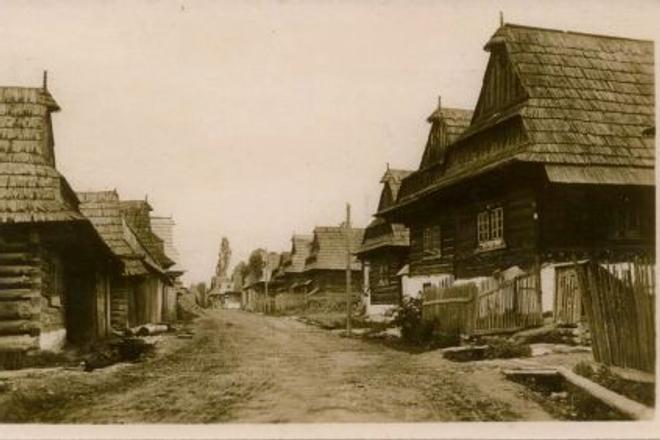IT IS believed that the area in which the municipality of Hruštín lies was not populated until the middle of the 16th century. The first mention of the village dates back to as late as 1584, which is not very surprising considering the harsh climatic conditions in the Orava region.
In this postcard by photographer Karol Plicka we see the main street in Hruštín in the 1920s. The houses lining the street are made of wood. Most villages of the Upper (Horná) and White (Biela) Orava still offered such views even years after World War II. The differences in living standards between villages in the Lower (Dolná) and the Upper Orava region were generally quite significant.
Bratislava lawyer Juraj Ďurkovič, who travelled this region in 1803, wrote that in the upper part, many dwellings were downright primitive and often lacked a chimney. The smoke from people’s stoves would thus drift slowly from the houses through tiny windows. In such “smoke houses”, it was common for there to be a layer of smoke hovering one metre below the ceiling, and people had to squat in order to breathe comfortably. Today, you will not find many such houses. However, some can be seen in the open-air museum of Orava Village in Zuberec, where they were actually brought from Hruštín.


